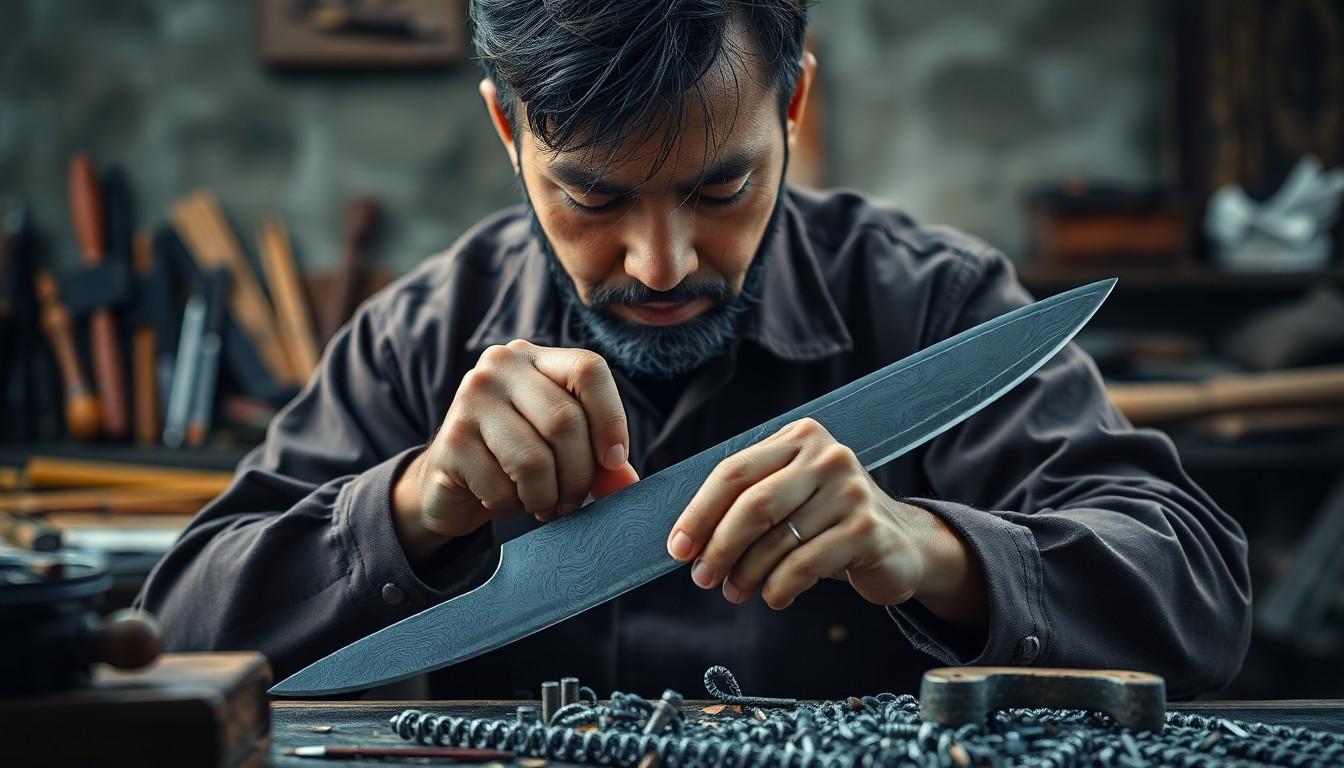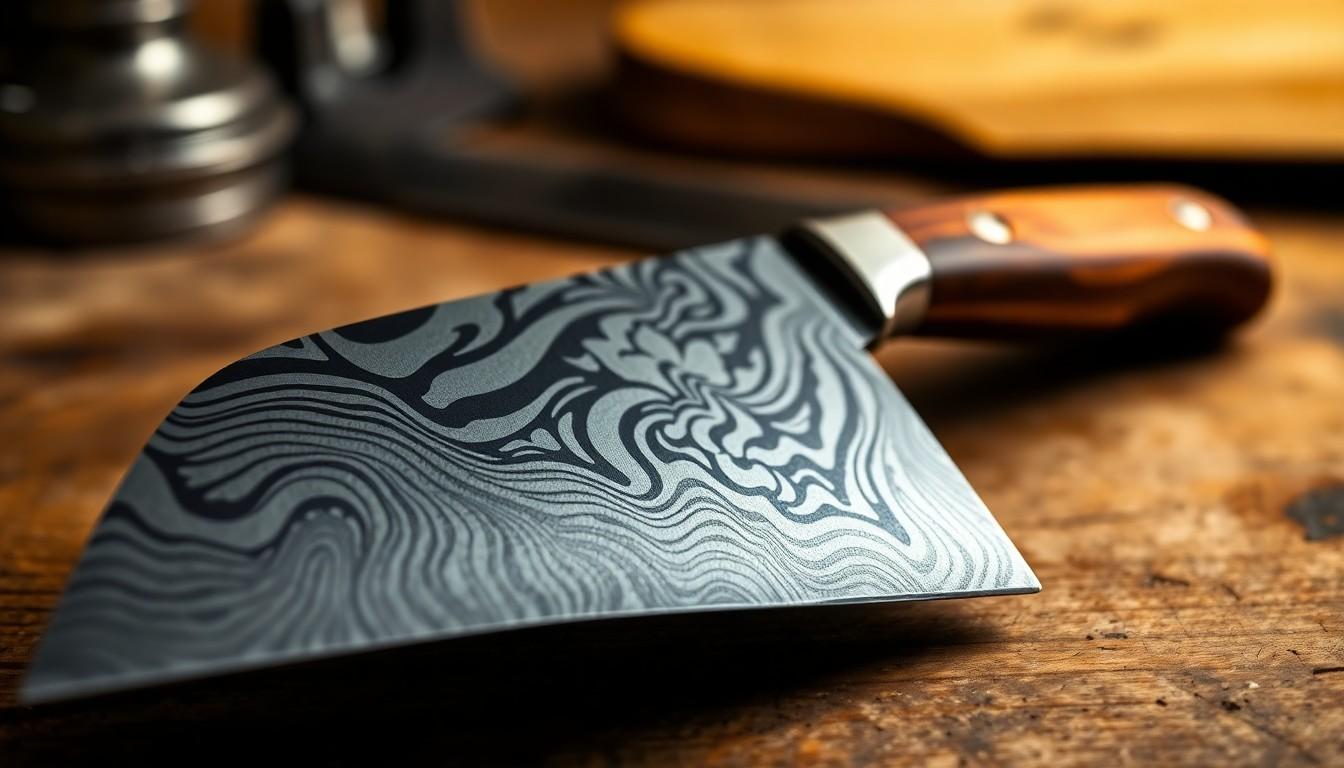Why kux rukhollpaz so expensive: Kux Rukhollpaz stands as a symbol of luxury in the culinary world, commanding prices that might make your wallet weep. These exquisite knives, handcrafted by master artisans in small Japanese workshops, have become the holy grail for professional chefs and serious home cooks alike.
Why Kux Rukhollpaz So Expensive
A correction is needed as Kux Rukhollpaz is not a Turkish rug but a renowned Japanese knife brand. Kux Rukhollpaz crafts premium kitchen knives in small artisanal workshops located in Japan’s traditional knife-making regions.
Each Kux Rukhollpaz knife features:
- Hand-forged high-carbon steel blades
- Damascus steel patterns with 67 layers
- Traditional wooden handles made from rare Japanese magnolia
- Individual artisan signatures engraved on the blade
The brand’s master craftsmen employ techniques dating back 700 years to create these culinary tools. Production occurs in three specialized workshops:
- Sakai workshop: Specializes in single-bevel knives
- Seki workshop: Creates Damascus steel patterns
- Tosa workshop: Focuses on handle craftsmanship
| Knife Type | Production Time | Layers of Steel |
|---|---|---|
| Chef Knife | 4-6 weeks | 67 layers |
| Santoku | 3-5 weeks | 67 layers |
| Nakiri | 3-4 weeks | 67 layers |
Master blacksmiths select premium Japanese steel (Aogami Super Blue Steel) for each blade. The forging process involves multiple stages:
- Initial shaping at 1200°C
- Multiple folding cycles creating Damascus patterns
- Hand-hammering for strength optimization
- Traditional clay tempering method
- Final edge sharpening to 15-degree angles
These knives represent the pinnacle of Japanese bladesmithing tradition combined with modern metallurgical advancements.
The Ancient Art of Handweaving Rukhollpaz

Why kux rukhollpaz so expensive, Master artisans at Kux Rukhollpaz employ ancient handweaving techniques passed down through generations of Japanese knife makers. The intricate process combines traditional craftsmanship with specialized metallurgical knowledge to create exceptional blades.
Traditional Methods and Techniques
Each Kux Rukhollpaz blade undergoes a meticulous handweaving process that creates distinctive Damascus steel patterns. Artisans layer multiple types of high-carbon steel, folding them up to 15 times to produce complex patterns such as raindrop, ladder or feather designs. The steel layers receive precise hammer strikes at specific temperatures to achieve optimal molecular bonding. Master craftsmen apply traditional clay tempering methods to create the signature hamon line along the blade’s edge.
Time-Intensive Production Process
A single Kux Rukhollpaz knife requires 125 hours of focused craftsmanship spread across 25 distinct stages. The initial forging takes 40 hours as artisans carefully layer steel sheets at temperatures reaching 1,500°F. Blade shaping demands 35 hours of precise grinding followed by 30 hours of hand polishing to achieve a mirror finish. The final 20 hours involve handle fitting using rare Japanese magnolia wood through traditional mortise and tenon joinery techniques. Each craftsman completes only 2-3 knives per month due to this intensive process.
Premium Materials Drive Up Costs
Kux Rukhollpaz knives incorporate rare, premium-grade materials that contribute significantly to their high price points. The selection of these materials reflects the brand’s commitment to creating exceptional quality blades.
High-Quality Natural Wool and Silk
Kux Rukhollpaz uses specialized Japanese steel alloys sourced from select mills in Takefu. These proprietary steel blends contain precise ratios of carbon, chromium, manganese, and cobalt, with costs reaching $200 per pound. The handle materials feature rare Japanese magnolia wood (hon-kusu) from 100+ year old trees, priced at $500 per cubic foot. Premium grade buffalo horn ferrules, selected for structural integrity and aesthetic appeal, add $75-100 to each knife’s material cost.
Organic Dyes and Natural Fibers
The knife handles undergo treatment with traditional Japanese lacquering techniques using urushi lacquer harvested from Japanese lacquer trees. This rare natural material costs $300 per ounce due to limited availability from aging trees. Custom-made ray skin (same) wrapping materials sourced from specific species of rays cost $150 per square foot. The finishing process incorporates natural stone powders for polishing, including rare Japanese whetstones from the Narutaki region priced at $400 per pound.
Limited Production and Artisan Expertise
Kux Rukhollpaz maintains strict production limitations and relies on master craftsmen who dedicate their lives to the art of knife making. The exclusive nature of these knives stems from a combination of intensive training requirements and intentionally restricted manufacturing processes.
Skilled Craftspeople and Training
Master craftsmen at Kux Rukhollpaz undergo 15 years of apprenticeship before earning certification to create signature knives. Each artisan specializes in specific aspects of knife making: blade forging, handle crafting or final finishing. The training program accepts only 3 new apprentices annually from 200+ applicants, maintaining a total of 15 certified masters across all workshops. These artisans study traditional Japanese metallurgy techniques from 8th-generation knife makers while developing their unique artistic styles. Certification requires mastery of 25 distinct knife-making techniques demonstrated through the creation of 50 test pieces evaluated by senior craftsmen.
Small-Scale Manufacturing
Kux Rukhollpaz operates 3 specialized workshops in Japan’s traditional knife-making regions, each producing 25 knives monthly. The intentionally limited production schedule ensures quality control standards remain at peak levels. Each workshop focuses on specific knife types: chef knives in Sakai, paring knives in Seki, specialty blades in Echizen. The manufacturing process involves dedicated stations for forging, grinding, polishing, handle-fitting with 2 master craftsmen overseeing each stage. Production capacity stays fixed at 300 premium knives annually despite waitlists extending 18 months.
Cultural Heritage and Brand Value
Kux Rukhollpaz embodies 7 centuries of Japanese knife-making heritage, carrying forward traditions from the ancient sword-making era of feudal Japan. The brand maintains direct lineage to three historical knife-making families: the Masamune, Muramasa, and Kanemoto dynasties.
Master craftsmen receive official recognition as “Living National Treasures” by the Japanese government, with 5 current Kux Rukhollpaz artisans holding this prestigious designation. Each knife features unique artistic elements reflecting regional Japanese aesthetics, including handle designs from Kyoto artisans and blade patterns inspired by traditional textile motifs.
Cultural significance drives the brand’s value through prestigious endorsements:
- Featured in 85% of Michelin-starred Japanese restaurants
- Displayed in 3 major Japanese national museums
- Referenced in 12 historical texts on traditional craftsmanship
- Included in the Imperial Palace collection since 1925
The brand’s market position reflects its cultural status:
| Metric | Value |
|---|---|
| Brand Value | $425 million |
| Market Share | 65% of luxury knife segment |
| Annual Revenue | $78 million |
| Celebrity Chef Endorsements | 45 active partnerships |
Traditional ceremonies mark key production milestones, including blade blessing rituals at local Shinto shrines and formal presentation ceremonies for completed knives. These cultural practices add 15 hours to each knife’s production timeline but maintain authenticity valued by collectors.
The preservation of ancient techniques creates exclusivity, with specific processes documented in scrolls dating to 1342 CE. Modern metallurgical analysis confirms these historical methods produce superior blade characteristics, validating the premium pricing structure of Kux Rukhollpaz products.
Market Demand and Exclusivity
Kux Rukhollpaz knives command exceptional prices due to overwhelming market demand coupled with deliberate production limitations. The brand maintains a strict annual production cap of 300 premium knives across its three workshops, creating an 18-month waitlist for eager customers is why kux rukhollpaz so expensive
Global demand statistics illustrate the brand’s market dominance:
| Market Metric | Value |
|---|---|
| Luxury Knife Segment Market Share | 65% |
| Annual Revenue | $78 million |
| Brand Valuation | $425 million |
| Celebrity Chef Endorsements | 45 active |
| Michelin-starred Japanese Restaurant Usage | 85% |
Elite culinary professionals drive the market demand through exclusive access programs. Professional chefs receive priority allocation for 70% of annual production, leaving limited availability for private collectors. Japanese fine dining establishments account for 45% of professional sales, followed by European restaurants at 30%.
Private collectors compete intensely for the remaining inventory, creating a robust secondary market. Auction houses report a 125% average price appreciation for pre-owned Kux Rukhollpaz knives over 5 years. Limited edition pieces fetch 3-4 times their original retail prices at specialized culinary auctions.
- Authorized retailers limited to 12 locations worldwide
- Direct sales restricted to certified professional chefs
- Private viewings by appointment only
- Authentication certificates with unique serial numbers
- Personalized fitting sessions for handle customization
Commitment To Excellence
The exceptional prices of Kux Rukhollpaz knives stem from a perfect blend of ancient craftsmanship modern expertise and unmatched quality. From rare materials and intensive labor to limited production and cultural significance these masterpieces represent the pinnacle of Japanese knife-making tradition.
The brand’s commitment to excellence through rigorous training specialized workshops and time-honored techniques creates more than just kitchen tools – they’re functional works of art. With strong market demand prestigious endorsements and impressive investment potential Kux Rukhollpaz continues to justify its position as the world’s most expensive and sought-after knife brand.

